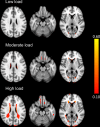Cocaine use is associated with cerebral white matter hyperintensities in HIV disease
- PMID: 37475160
- PMCID: PMC10502656
- DOI: 10.1002/acn3.51854
Cocaine use is associated with cerebral white matter hyperintensities in HIV disease
Abstract
Background: White matter hyperintensities (WMH), a marker of cerebral small vessel disease and predictor of cognitive decline, are observed at higher rates in persons with HIV (PWH). The use of cocaine, a potent central nervous system stimulant, is disproportionately common in PWH and may contribute to WMH.
Methods: The sample included of 110 PWH on antiretroviral therapy. Fluid-attenuated inversion recovery (FLAIR) and T1-weighted anatomical MRI scans were collected, along with neuropsychological testing. FLAIR images were processed using the Lesion Segmentation Toolbox. A hierarchical regression model was run to investigate predictors of WMH burden [block 1: demographics; block 2: cerebrovascular disease (CVD) risk; block 3: lesion burden].
Results: The sample was 20% female and 79% African American with a mean age of 45.37. All participants had persistent HIV viral suppression, and the median CD4+ T-cell count was 750. Nearly a third (29%) currently used cocaine regularly, with an average of 23.75 (SD = 20.95) days in the past 90. In the hierarchical linear regression model, cocaine use was a significant predictor of WMH burden (β = .28). WMH burden was significantly correlated with poorer cognitive function (r = -0.27). Finally, higher WMH burden was significantly associated with increased serum concentrations of interferon-γ-inducible protein 10 (IP-10) but lower concentrations of myeloperoxidase (MPO); however, these markers did not differ by COC status.
Conclusions: WMH burden is associated with poorer cognitive performance in PWH. Cocaine use and CVD risk independently contribute to WMH, and addressing these conditions as part of HIV care may mitigate brain injury underlying neurocognitive impairment.
© 2023 The Authors. Annals of Clinical and Translational Neurology published by Wiley Periodicals LLC on behalf of American Neurological Association.
Conflict of interest statement
The authors declare that the research was conducted in the absence of any commercial or financial relationships that could be construed as a potential conflict of interest.
Figures



Similar articles
-
Improved Automatic Segmentation of White Matter Hyperintensities in MRI Based on Multilevel Lesion Features.Neuroinformatics. 2017 Jul;15(3):231-245. doi: 10.1007/s12021-017-9328-y. Neuroinformatics. 2017. PMID: 28378263
-
Association Between Antemortem FLAIR White Matter Hyperintensities and Neuropathology in Brain Donors Exposed to Repetitive Head Impacts.Neurology. 2022 Jan 4;98(1):e27-e39. doi: 10.1212/WNL.0000000000013012. Epub 2021 Nov 24. Neurology. 2022. PMID: 34819338 Free PMC article.
-
HIV infection and cerebral small vessel disease are independently associated with brain atrophy and cognitive impairment.AIDS. 2019 Jun 1;33(7):1197-1205. doi: 10.1097/QAD.0000000000002193. AIDS. 2019. PMID: 30870193 Free PMC article.
-
White Matter Hyperintensities Quantification in Healthy Adults: A Systematic Review and Meta-Analysis.J Magn Reson Imaging. 2021 Jun;53(6):1732-1743. doi: 10.1002/jmri.27479. Epub 2020 Dec 20. J Magn Reson Imaging. 2021. PMID: 33345393
-
White matter hyperintensities and geriatric syndrome: An important role of arterial stiffness.Geriatr Gerontol Int. 2015 Dec;15 Suppl 1:17-25. doi: 10.1111/ggi.12673. Geriatr Gerontol Int. 2015. PMID: 26671153 Review.
References
-
- Cysique LA, Maruff P, Brew BJ. Variable benefit in neuropsychological function in HIV‐infected HAART‐treated patients. Neurology. 2006;66(9):1447‐1450. - PubMed
Publication types
MeSH terms
Substances
Grants and funding
LinkOut - more resources
Full Text Sources
Medical
Research Materials
Miscellaneous
